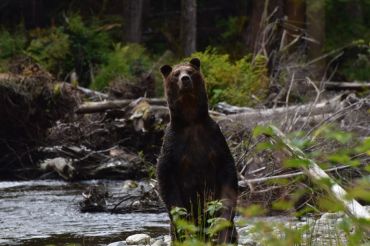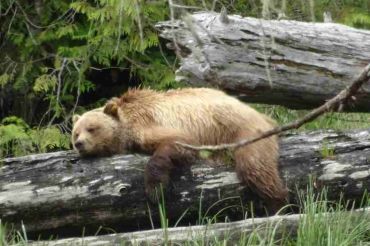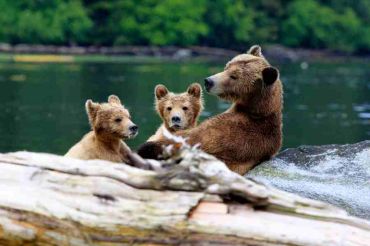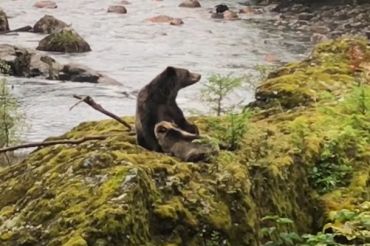Bears
Grizzly Bears
The "Great Brown Bears" of BC's Great Bear RainforestThe Great Bear Rainforest is critically important for North America's remaining grizzly bears - it is the most southerly coastal grizzly bear population remaining on the Pacific coast and acts as a stronghold for North America's remaining grizzlies. Before Europeans arrived in North America, a vast network of grizzly bear (Ursus arctos horribilis) trails existed between California and Alaska. Today the southern extent of the grizzly's range has been destroyed, largely by habitat loss from logging and urbanization. Only a few small isolated patches of habitat are presently occupied by grizzlies below the 49th parallel.
 |
 |
 |
Black Bears
The American black bear (Ursus americanus) is the most common and widely distributed of the three bears found in Canada.BC boasts one of the highest populations of black bears in the world with their numbers being somewhere between 120 and 150 thousand animals. Pretty much all of BC is considered “bear country” with bears inhabiting everything from the coastal forests, through to the interior grasslands. One of the most widely distributed mammals, Black bears have low reproductive rates compared to many other mammals. Females usually don’t reach sexual maturity until four years of age and breed only every two to three years after that. In areas of abundant food, they may reach maturity sooner. Where food is scarce females might not bear their first litter until they are six or seven years old. Although some males can breed when they are one and a half years old, in most populations males don’t mature sexually until age five or six.
Black bears in British Columbia usually mate from early June to mid-July. However, in a phenomenon called delayed implantation, the embryo does not implant in the uterus and begin developing until October or November. Cubs are born in January or February, during hibernation. Black bears usually have two cubs, but litter sizes vary from one to five. At birth, cubs are hairless, blind, and weigh about 400 g. They nurse while the mother continues hibernating and weigh 3 to 5 kg when they leave the den in spring.

